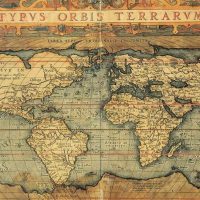Category: History Essay Examples
See our collection of history essay examples. These example essays are to help you understanding how to write a history essay. History is a fascinating puzzle with both personal and cultural significance. The past informs our lives, ideas, and expectations. Historians study the past to figure out what happened and how specific events and cultural developments affected individuals and societies. Also, see our list of history essay topics to find the one that interests you.
Liu Bang (Liu Pang), a commoner, founded the Han dynasty (202 b.c.e.–220 c.e.), restoring unity, continuing the good reforms made by the Qin (Ch’in) dynasty, abolishing cruel Qin laws, and laying solid foundations that would sustain it for 400 years. The dynasty is divided into two segments: the …
Between the years 264 and 146 b.c.e., the Romans and Carthaginians fought three wars known as the Punic Wars that eventually led to the destruction of Carthage. The First Punic War lasted from 264 until 241 b.c.e. and resulted in Carthage losing control of Sicily to the Romans. …
Han Wudi reigned between 141 and 187 b.c.e., the longest in Chinese history until the 18th century. He undertook many domestic reforms that changed the course of Han history and for subsequent eras. His foreign policy and wars resulted in Chinese expansion to unprecedented heights and opened up …
Helena was the mother of Constantine the Great. She was born of humble estate at Drepanum in Bithynia. According to Ambrose, the early church bishop, she was a simple innkeeper. She married Constantius Chlorus, a soldier, by whom she bore Constantine (c. 274 c.e.). Later, Constantius divorced Helena …
According to the Iliad, the abduction of Helen, wife of the king of Sparta, sparked the 10-year-long Trojan War. Helen is thought to have been born around 1225 b.c.e. According to Homer, who is credited as author of both the Iliad and the Odyssey, Helen’s father was the …
The Hellenistic Period of Greek art lasted from the fourth century b.c.e. to approximately the time of Jesus (Christ) of Nazareth, a period of more than 300 years. Unlike earlier Greek art, which consisted predominantly of art of Greece itself, Hellenistic art was more diverse culturally and geographically. …
Hellenization was the spread of Greek culture and the assimilation into Greek culture of non-Greek peoples. It was a notable trait of ancient Greek civilization, an approach to other cultures that was not merely invasive or dominant but transformative. This set an example later followed by the Roman …
Early Christian theology had the problem of reconciling the belief in only one God, taken over from Judaism, with the belief that both Jesus (Christ) of Nazareth and his father are God. One solution to this problem was Monarchianism, which means that God consists of only one person, …
Still in a state of formation as late as the eighth century b.c.e., the Odyssey and the Iliad, the Homeric epics, represented the foundational myths of early Greek civilization. They were histories of the Trojan War—informative, didactic, and entertaining. Some two centuries later another confrontation was rendered epic, …
The Herods were Jewish client kings of Rome who governed between 37 b.c.e. and 92 c.e. in the area that included significant potions of modern Israel, southern Syria, southern Lebanon, and Jordan. Rome appointed client kings with limited military and taxation powers in the provinces in the Eastern …
Hesiod was a poet whose works are some of the oldest and most celebrated in Greek literature. If the Greeks revered Homer as an inspired storyteller and collector of the heroic tales, then Hesiod must rank as his counterpart in narrating the background epic myths and filling in …
Biblical scholars increasingly view Hezekiah as the most capable king in Israel and Judah back to the time of David and Solomon. Only kings Ahab and Josiah can compare with him as far as running domestic and foreign affairs. He presided over a period of religious reform, Assyrian …
The system of writing known as hieroglyphics was used to write the ancient Egyptian language from before 3000 b.c.e. until the late fourth century c.e. Each symbol in this system is known as a hieroglyph. The term hieroglyphic (meaning “sacred writing”) was coined by the ancient Greeks, who …
Hinduism consists of a voluminous body of thought and philosophy arranged within a number of different schools and tendencies, developed over the course of centuries as scholars revisited or provided commentaries on existing literature. The particular configurations of thought and literature involved in Hindu thought are arranged in …
Hippocrates (460–377 b.c.e.) has been called the father of Greek medicine. The young Hippocrates observed his physician father and his peers practicing the healing art. He traveled throughout Greece and possibly as far as Libya and Egypt. Ptolemy Soter (323–285 b.c.e.), an Egyptian pharaoh, published a collection of …
The Hittites were Indo-Europeans who entered Anatolia in approximately 2300 b.c.e. and in the following centuries managed to become one of the dominant powers of the ancient Near East. The word Hittite derives from their term for central Anatolia, hatti, which was derived from those who lived in …
The epics of the Greek writer Homer—the Iliad and the Odyssey—are the earliest and the best known of classics of Greek literature. Both are long epic poems, and several scholars have argued that different people probably wrote the two, with some academics arguing against even the existence of …
The late Spring and Autumn (722–481 b.c.e.) era and the Warring States (481–222 b.c.e.) era in China were marked by political chaos and social and economic change. The Zhou (Chou) dynasty was impotent and relegated to the sidelines as powerful lords vied for total control. Warfare became increasingly …
The White Huns were steppe nomads who grew to power in Central Asia, China (where they were called Xiongnu (Hsiung-nu), and northern India during the fourth and fifth centuries c.e. Different from the Huns organized under Attila, the White Huns were believed to have had white skin and …
The Hurrians were a non-Semitic, Indo-European people who originated in Caucasia, or beyond, northeast of Mesopotamia. In the late third millennium b.c.e. they migrated from east of the Tigris River across northern Mesopotamia, eventually making their way to the Mediterranean coast in the late second millennium b.c.e. During …


